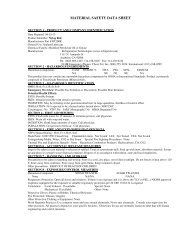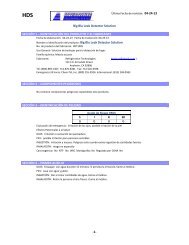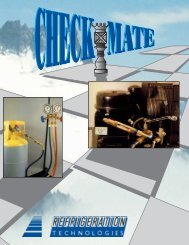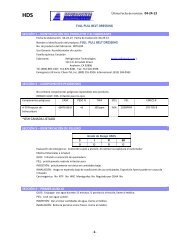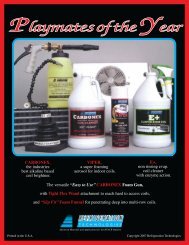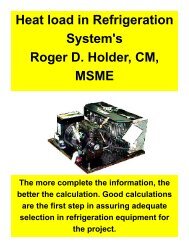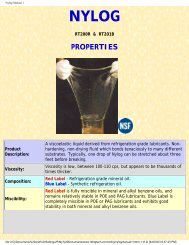Balancing of a Water and Air System (PDF
Balancing of a Water and Air System (PDF
Balancing of a Water and Air System (PDF
You also want an ePaper? Increase the reach of your titles
YUMPU automatically turns print PDFs into web optimized ePapers that Google loves.
105<br />
• Orifice plate<br />
• Turbine meter (traverse)<br />
• Pitot tube (traverse)<br />
• Other mutually agreed upon flow measuring devices<br />
For these devices, ensure that the proper upstream <strong>and</strong> downstream flow conditions<br />
exist.<br />
Report <strong>of</strong> Results<br />
The report <strong>of</strong> test results must include:<br />
• A description <strong>of</strong> the cooling tower, including the name <strong>of</strong> the manufacturer, the model<br />
number, serial number, orientation, <strong>and</strong> principal dimensions.<br />
• A sketch <strong>of</strong> the installation showing the location <strong>of</strong> instrumentation for measuring<br />
water flow, water temperatures, air temperatures, etc. Note any buildings, walls,<br />
obstructions, or other equipment in the immediate vicinity <strong>of</strong> the tower being tested. Give<br />
particular attention to any equipment or facilities discharging heat or vapor near the<br />
tower.<br />
• A copy <strong>of</strong> all test data sheets, plus a single summary sheet tabulating all test data<br />
averages used in calculating results <strong>and</strong> comparing them to the associated design<br />
values for the same parameter (Appendix 13.1).<br />
• A copy <strong>of</strong> all calculations made in determining the result.<br />
• A brief summary stating the test result <strong>and</strong> mentioning any areas in which the test<br />
deviated from the test parameters.<br />
• The distribution <strong>of</strong> the report shood be limited to the parties directly involved in the<br />
test.<br />
Evaluating the Test<br />
Since a cooling tower test can seldom, if ever, be conducted at both design heat load <strong>and</strong><br />
design entering wet bulb temperature, the test procedure <strong>and</strong> method for calculating<br />
results must address several issues, including:<br />
• Establishing the maximum deviations between the design conditions <strong>and</strong> actual test<br />
conditions that can be allowed while still yielding a valid test result.<br />
• Specifying the instrumentation <strong>and</strong> procedures that must be used in order to obtain an<br />
accurate measurement <strong>of</strong> the actual cooling tower thermal performance.<br />
• Establishing a consistent procedure for comparing the measured performance to the<br />
required performance.<br />
The degree to which the test conditions may deviate from design <strong>and</strong> still yield a valid<br />
test, as set forth in the test parameters, has been accepted practice in the cooling tower<br />
105




